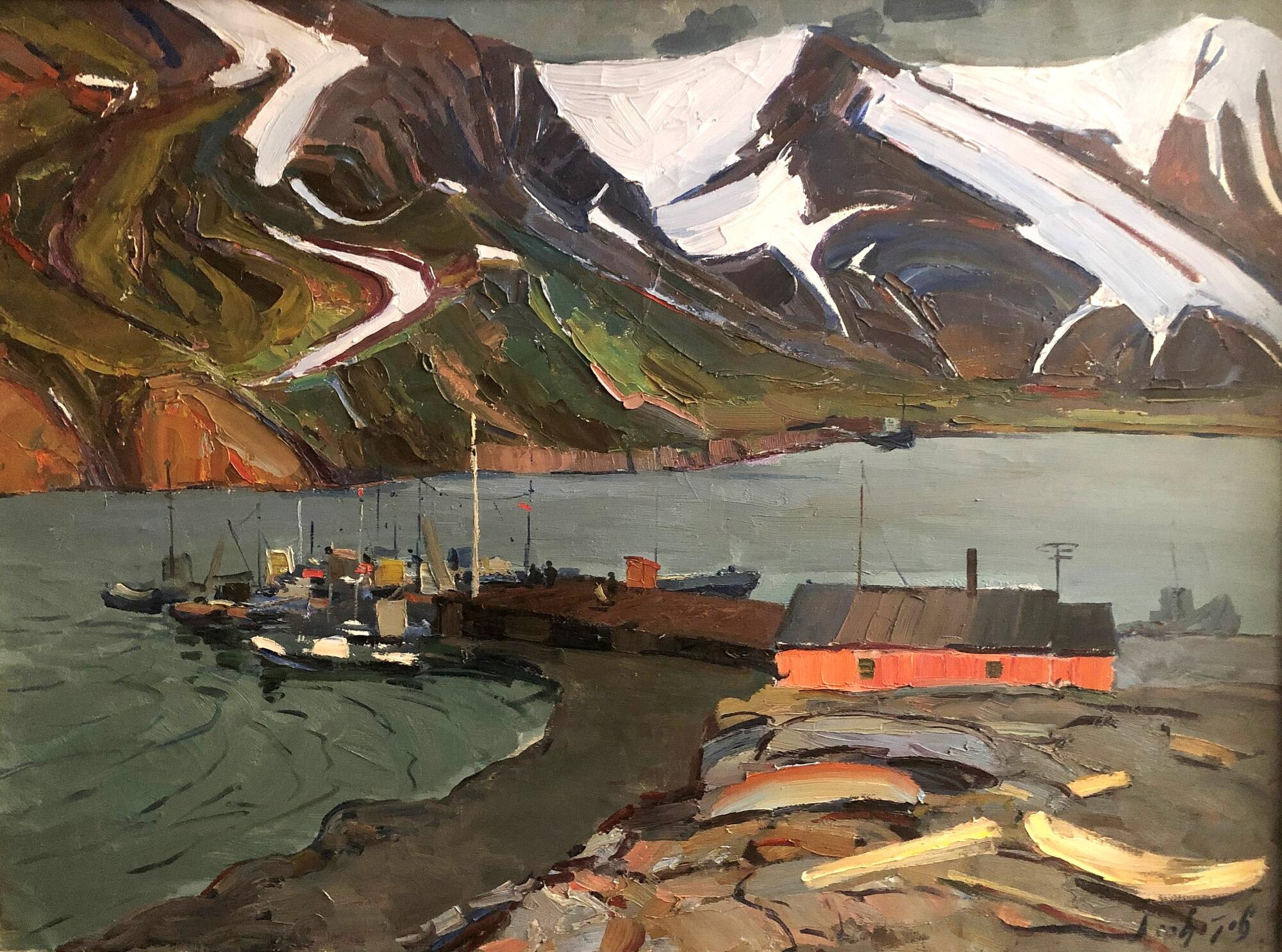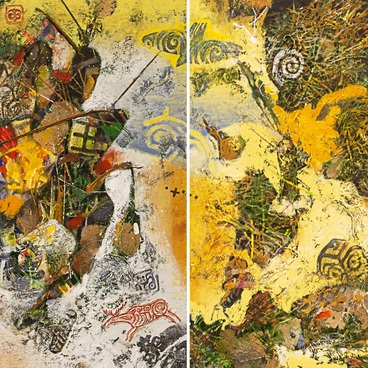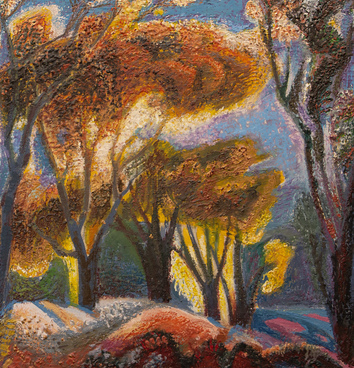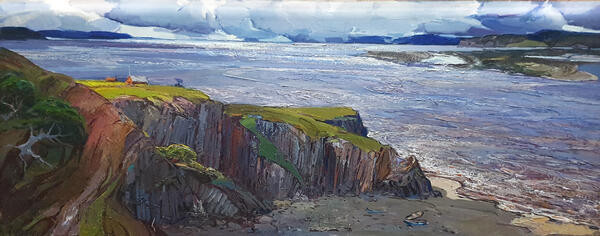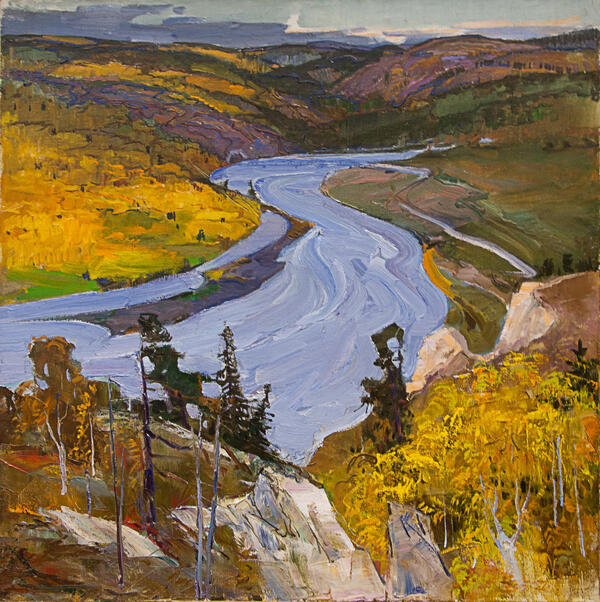Alexey Matveyevich Fedotov, a landscape painter fond of the Russian Far East, was born in 1919 in the village of Katarbey in the Irkutsk region. His father, a skilled carver and joiner, instilled good taste in art into his son. Fedotov discovered his calling early on and studied painting under Ivan Pavlovich Sverkunov, diligently honing his skills through sketches and preparing to enter the Academy of Arts.
Tragically, in 1937, Alexey Fedotov lost both his father and his mentor Sverkunov to the repressions. Fedotov was very traumatized by this, and he had to part with his dreams of going to the Academy. Instead, he enrolled at the Irkutsk Art School, however, he was later drafted and never finished his studies. Some time afterward, his friend and artist Grigory Stepanovich Zorin asked Fedotov to move to Khabarovsk.
Fedotov tried his hand at theater design, portraiture, graphics, creating sets using ready sketches, and painting compositions. Yet his work would always revolve around landscapes that helped the viewers rediscover Kamchatka, Sakhalin, Primorye, the Kuril Islands, the Amur region and Transbaikal. His brush rendered each of those places unique.
Alexey Fedotov started participating in national (in 1950) and All-Union (in 1956) exhibitions, received numerous awards from the Ministry of Culture and was a member of the Artists’ Union of the RSFSR.
During one of the meet-the-artist events, Alexey Fedotov was asked which of his works he would like to present at his personal exhibition. He named three — “Baikal”, the triptych “Father Amur” and “In Lavrov Bay”.
The large scale of the landscape, its cheerful life-affirming colors and broad impasto brushstrokes convey the majestic and vast expanses of Russian Far Eastern nature. It is also emphasized by small, toylike ships in Lavrov Bay against the background of snow-covered rocks.
At the end of his life, Alexey Fedotov dreamed of organizing a personal exhibition by collecting his best works all over the country, but he never got a chance. During one of the last get-togethers with his friends, he said,
Tragically, in 1937, Alexey Fedotov lost both his father and his mentor Sverkunov to the repressions. Fedotov was very traumatized by this, and he had to part with his dreams of going to the Academy. Instead, he enrolled at the Irkutsk Art School, however, he was later drafted and never finished his studies. Some time afterward, his friend and artist Grigory Stepanovich Zorin asked Fedotov to move to Khabarovsk.
Fedotov tried his hand at theater design, portraiture, graphics, creating sets using ready sketches, and painting compositions. Yet his work would always revolve around landscapes that helped the viewers rediscover Kamchatka, Sakhalin, Primorye, the Kuril Islands, the Amur region and Transbaikal. His brush rendered each of those places unique.
Alexey Fedotov started participating in national (in 1950) and All-Union (in 1956) exhibitions, received numerous awards from the Ministry of Culture and was a member of the Artists’ Union of the RSFSR.
During one of the meet-the-artist events, Alexey Fedotov was asked which of his works he would like to present at his personal exhibition. He named three — “Baikal”, the triptych “Father Amur” and “In Lavrov Bay”.
The large scale of the landscape, its cheerful life-affirming colors and broad impasto brushstrokes convey the majestic and vast expanses of Russian Far Eastern nature. It is also emphasized by small, toylike ships in Lavrov Bay against the background of snow-covered rocks.
At the end of his life, Alexey Fedotov dreamed of organizing a personal exhibition by collecting his best works all over the country, but he never got a chance. During one of the last get-togethers with his friends, he said,
